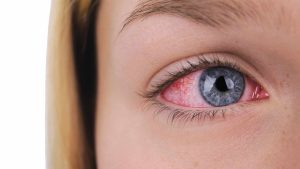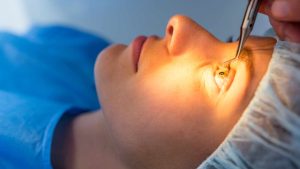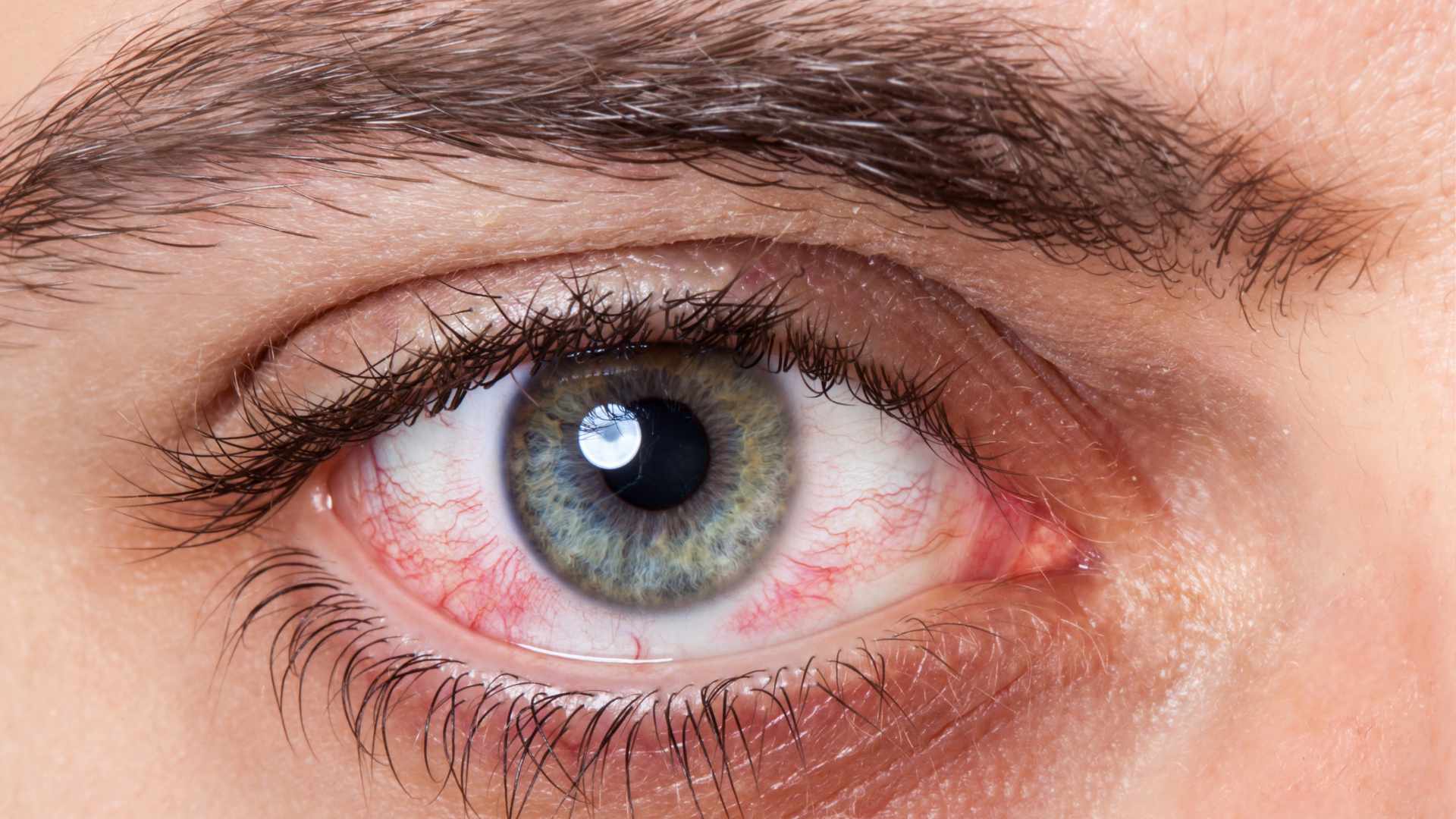Waking up with a red spot in your eye can be concerning, but it is usually not a cause for alarm. The most common cause of a red spot on the eye is a subconjunctival hemorrhage, which occurs when a blood vessel beneath the clear surface of the eye breaks. While this condition is generally harmless and does not require treatment, it is important to be aware that a red spot on the eye could also be a sign of a more serious condition, such as sickle cell disease or cancer. Consulting with an eye health professional can help determine the cause and appropriate treatment options.
Why Did I Wake Up With a Red Spot in My Eye?
Red spots on the eye can be caused by various factors, with the most common one being a subconjunctival hemorrhage. This occurs when a blood vessel beneath the clear surface of the eye breaks, resulting in the appearance of a red spot. Subconjunctival hemorrhages are often harmless and resolve on their own without treatment. However, there are other causes of red spots on the eye that may require further evaluation and intervention by an eye health professional.
1. Physical Stress
Physical stress, such as trauma or straining, can lead to red spots on the eye. Activities like lifting heavy objects or intense bouts of coughing, sneezing, vomiting, or constipation can increase pressure in the blood vessels, causing them to rupture and result in redness.
2. Medical Conditions
Certain medical conditions can contribute to the development of red spots on the eye. Conditions like diabetes and high blood pressure can weaken the blood vessels, making them more prone to damage and hemorrhaging. It is essential for individuals with these conditions to manage them effectively to reduce the risk of eye-related symptoms.
3. Other Eye Conditions
Aside from subconjunctival hemorrhages, there are other eye conditions that can cause red spots. These include:
- Episcleritis: An inflammatory condition affecting the thin tissue between the conjunctiva and the white part of the eye, causing redness.
- Pinguecula: A growth or thickening of the tissue on the outside of the eye, which can become inflamed and lead to redness.
- Conjunctival Hemangioma: Clumps of twisted blood vessels that can develop on the white part of the eye, potentially causing red spots or discoloration.
If you have a red spot on your eye that persists or is accompanied by other concerning symptoms, it is important to consult with an eye health professional for further evaluation and appropriate treatment.
| Common Causes of Red Spots on the Eye | Characteristics | Treatment |
|---|---|---|
| Subconjunctival Hemorrhage | Red spot on the eye, often painless and without vision changes | Usually resolves on its own within a week or two |
| Episcleritis | Redness on the white part of the eye, potential accompanying discomfort | Treatment may involve anti-inflammatory medications or eye drops |
| Pinguecula | Growth or thickening on the outside of the eye, potential inflammation | Management may include lubricating eye drops or surgical removal in severe cases |
| Conjunctival Hemangioma | Clumps of twisted blood vessels on the white part of the eye | Treatment options may include observation, laser therapy, or surgical removal |
Symptoms and Characteristics of a Subconjunctival Hemorrhage

A subconjunctival hemorrhage is characterized by a red spot on the white part of the eye, known as the sclera. This red spot is caused by the presence of blood under the clear coating that covers the sclera, called the conjunctiva. While the red spot may initially appear alarming, it is typically painless and does not cause any vision changes. Other common symptoms associated with a subconjunctival hemorrhage include a scratchy feeling on the surface of the eye and a gradual change in color from red to yellow as the blood is absorbed. Most subconjunctival hemorrhages resolve on their own within a week or two and do not require specific treatment. However, artificial tears or cold compresses can provide relief for any accompanying discomfort or swelling.
Other Possible Causes of Red Spots on the Eye
In addition to subconjunctival hemorrhages, there are other potential causes of red spots on the eye that may warrant further evaluation by an eye professional. These include:
Episcleritis
Episcleritis is an inflammatory disorder that affects the thin tissue between the conjunctiva and the white part of the eye, known as the sclera. It can cause redness and discomfort in the affected area.
Pinguecula
Pinguecula is a common growth or thickening of the tissue on the outside of the eye. It can become inflamed and cause redness.
Conjunctival Hemangioma
Conjunctival hemangiomas are clumps of twisted blood vessels that can develop on the white part of the eye. They are usually present from birth but may appear later in life and can cause red spots or lesions on the eye.
Sickle Cell Disease
Sickle cell disease, a blood disorder, can also cause red spots or lines on the white part of the eye due to blockages in small blood vessels. It is important for individuals with sickle cell disease to monitor their eye health closely.
LASIK Surgery and Growth on the Eye

Certain eye procedures, such as LASIK surgery, and the presence of growths or tumors on the eye may result in red spots or other eye symptoms. It is essential to consult with an eye professional if you have undergone LASIK surgery or have any growths on your eye that cause concern.
| Possible Causes | Symptoms |
|---|---|
| Episcleritis | Inflammation of the thin tissue between the conjunctiva and the sclera |
| Pinguecula | Growth or thickening of tissue on the outside of the eye |
| Conjunctival Hemangioma | Clumps of twisted blood vessels on the white part of the eye |
| Sickle Cell Disease | Blockages in small blood vessels causing red spots or lines on the eye |
| LASIK Surgery and Eye Growth | Red spots or other eye symptoms after eye procedures or due to growths on the eye |
When to Seek Medical Attention for a Red Spot on the Eye
While a red spot on the eye is often harmless, it’s important to be aware of certain signs and symptoms that may indicate a need for medical attention. If the red spot does not go away within a few weeks, is accompanied by eye pain or vision changes, recurs frequently, or is located inside the colored part of the eye (iris), it is advisable to seek medical attention. An eye exam conducted by an eye care professional can help determine the underlying cause of the red spot and rule out any serious conditions that may require treatment. It is always better to err on the side of caution and consult with a healthcare provider if you have any concerns or doubts about a red spot on your eye.
Conclusion
Waking up with a red spot in your eye can be concerning, but it is usually not a cause for alarm. The most common cause of a red spot on the eye is a subconjunctival hemorrhage, which is often harmless and resolves on its own within a week or two. However, it is important to understand that red spots on the eye can have other causes, including underlying medical conditions and eye-related issues.
If you have a persistent red spot, experience pain or vision changes, or have other concerning symptoms, it is recommended to consult with an eye care professional for further evaluation and appropriate treatment. They can examine your eyes and determine the underlying cause of the red spot. This comprehensive evaluation may involve checking your blood vessels in the eye and ruling out any potential medical conditions that could be causing the red spot. Prompt medical attention is crucial, as it can help identify and address any vision problems or eye health concerns that may require treatment.
To maintain optimal eye health, it is essential to prioritize regular eye exams with an eye care professional. These exams help monitor the health of your eyes, detect any potential issues early on, and prevent the development of more serious conditions. By taking proactive steps to care for your eyes and seeking medical attention when needed, you can ensure that your vision remains clear and your eyes stay healthy for years to come.




